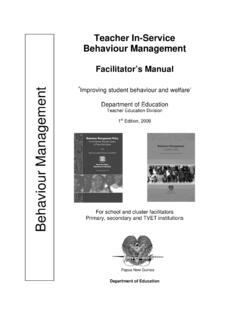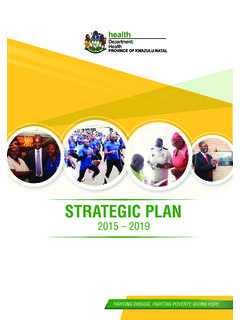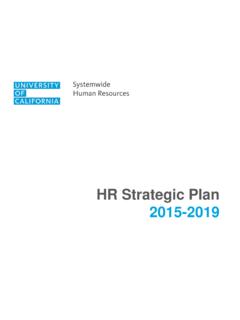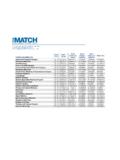Transcription of Department of Education National Education Plan 2015-2019
1 National Education Plan 2015 - 2019 Quality learning for allPapua New GuineaDepartment of EducationNational Education Plan 2015 - 2019 Quality learning for allAll rights reserved. No part of this publication may be reproduced, distributed, or transmitted in any form or by any means, including photocopying, recording, or other electronic or mechanical methods, without the prior written permission of the publisher, except for the case of brief quotations in reviews and certain other non-commercial uses permitted by copyright law. For permission requests, write to the publisher at the address of Education Fincorp Haus PO Box 446 Waigani Port Moresby National Capital District Papua New Guinea by Amandine Goineau & David Gerega Printed in Papua New Guinea by First Printing, 2016 ISBN 978-9980-89-097-9 AcknowledgmentsIt is essential to demonstrate our appreciation of those whose tireless efforts helped to formulate the National Education Plan 2015 19.
2 Their contributions are highly is not possible to thank individually everyone who has contributed to the development of the plan. The list includes many individuals in the National Department of Education (DoE), other government departments, church agencies, development partners and provincial Education officers; we acknowledge all their , we particularly acknowledge acting Secretary for Education Dr. Uke Kombra, PhD, the DoE planning team including Joseph Logha, Maxton Essy, John Kawage, Sabati Mero, Peter Lagia, Kaminiel Irima, Raphael Pavuo, Joe Dau and former Secretary for Education Dr. Michael F. Tapo also acknowledge the support of the Australian government through its Education Capacity Development Facility advisory support.
3 Voluntary Service Overseas and and acronyms4 Figures and tables6 Message from the Minister for Education8 Message from the Secretary for Education9 Executive summary10 Section onePapua New Guinea context13 Section twoEducation in Papua New Guinea17 Section threePlanning framework29- An overview of future development of Education in PNG32- Universal Education in PNG 33 Section four The plan35 Section fiveMonitoring and evaluation53 Section sixProjections and costings67 Section sevenAnnexes73 Annex AAdditional data74 Annex BEnrollment projections for 2015 2478 Annex CProposal for school system restructure reform79 Section eightReference material814 I Quality learning for all Abbreviations and acronymsADAdministration Division, NDoEALESCOPNG government s human resource and payroll systemAOFPA nnual Operational Financial PlanBOGB oard Of GovernorsBOMB oard Of Management CDDC urriculum Development Division, NDoECEAC hurch Education agencyDPLGAD epartment of Provincial and Local Government AffairsDSGD istrict Support GrantECCEE arly-childhood care and educationEFAE ducation For AllE-LDE-Learning Division, NDoEEMISE ducation Management Information SystemFDFinance Division, NDoEFODEF lexible open and distance learningGCDG uidance and Counselling Division, NDoEGDPG ross domestic productGERG ross enrolment ratioGESG eneral Education Services Division.
4 NDoEGoPNGG overnment of Papua New GuineaHIV/AIDSH uman immunodeficiency virus/acquired immune deficiency syndromeHRODH uman Resources and Organisational Development Division, NDoEIAI nternal Audit Division, NDoEICTI nformation and communications technologyICTDI nformation and Communications Technology Division, NDoEIFMSI ntegrated Financial Management SystemKmKina millionLLGL ocal-Level GovernmentM&EMonitoring and evaluationMCUM edia and Communications Unit, NDoEMoEMinistry of EducationMSDM easurement Services Division, NDoENDoENational Department of EducationNEPN ational Education PlanNERNet enrolment ratioNESN ational Education systemNational Education Plan I 5 NGONon-governmental organisationNLASN ational Literacy Awareness Secretariat, OLANQSSFN ational Quality School Standards FrameworkNSLCFN ational School Leadership Competency FrameworkNTCFN ational Teachers Competency FrameworkOLAO ffice of Libraries and ArchivesOOSCIOut-Of-School Children InitiativePaBERP acific Benchmarking for Education ResultsP&CParents and citizensPARIP apua New Guinea Accessibility Remote IndexPayDPayroll Division.
5 NDoEPILNAP acific Islands Literacy and Numeracy AssessmentPISAP rogram for International Student AssessmentPNGP apua New GuineaPPDP olicy and Planning Division, NDoEPQEPP arents for Quality Education ProgramProDProcurement Division, NDoEREDR esearch and Evaluation Division, NDoESBCS tandards-Based CurriculumSBES tandards-Based EducationSDStandards Division, NDoESERCS pecial Education Resource CentreSGStandards and Guidance Division, NDoESLIPS chool Learning Improvement PlanSOStandards OfficerTEDT eacher Education Division, NDoETFFT uition Fee Free TIMSST rends in International Mathematics and Science StudyTSCT eaching Service CommissionTVETT echnical and vocational Education and trainingTVETDT echnical and Vocational Education and Training Divisions, NDoEWaSHWater sanitation and hygiene6 I Quality learning for all Figures and tablesFigure 1 The regions and provinces of Papua New Guinea14 Figure 2 Total enrolment growth, 2004 1420 Figure 3 Enrolment growth, by sector, 2004 1421 Figure 4 Grade 8 to Grade 9 transition rate, by gender, 2004 1421 Figure 5 Total government funding of Education and enrolment, indexed to 2004 = 100, 2004 1323 Figure 6 Total government funding of Education , by major costs, 2004 13 (Km)
6 24 Figure 7 Education system, 201525 Figure 8 Gender of enrolled students, by sector, 201427 Figure 9 The National Education Plan connections in planning30 Figure 10 NEP 2015 19 logic framework36 Figure 11 NEP outputs55 Figure 12 NEP outcomes62 Figure 13 Student population, by grade, gender and over-age percentage, 201475 Table 1 Number of schools operating, by management, 201425 Table 2 Number of students enrolled, by grade, 201426 Table 3 Teacher numbers and teacher-pupil ratio, by grade, 201426 Table 4 Transition rate, 201427 Table 5 Long-term school building targets, in line with Vision 205039 Table 6 Projected student enrolment, 2015 1968 Table 7 Financial projections, 2015 1969 Table 8 Revenue projections, by source, 2015 1971 Table 9 Qualifications of teachers, by sector and gender, minimum required highlighted (% of total qualifications)74 Table 10 Number of operating schools, by province and sector, 201475 Table 11 Student:teacher ratio and average number of teachers per school, by province and sector, 201475 Table 12 Student enrolment, by province and gender, 201476 Table 13 Districts without vocational centres, 201476 Table 14 Toilets, by sector, construction and gender, 201377 Table 15 Students with special needs, by grade, 201377 Table 16 Students with special needs registered with Special Education Resource Centre (SERC), by grade, 201377 Table 17 Projected student enrolment, 2015 2478 Table 18.
7 Current system to Neew sytem798 I Quality learning for all In this NEP I am delighted to announce the beginning of a well overdue initiative of 13 years of Universal Education for all students. This is a very exciting phase of development for our Education system, building on the success of Universal Basic Education strategies. It will see PNG leading the way towards the achieving the Global 2030 goals of Education . Every child in this country has the right to a relevant and quality Education and this plan will lead the way. Under Universal Education every child will have a quality Education , with teacher s qualifications upgraded and a National Curriculum Framework guiding 13 years of Education .
8 There will be Quality Standards in place for learning, schools, teachers and principals. I pledge that we will make sure those standards are met and upheld across the country. Universal Education will commence with a preparatory grade to build the foundations of literacy and numeracy. Students will progress through their primary Education with grade 7 and 8 students, remaining in a primary school setting, having specialist English, mathematics and science teachers and learning skills such as critical thinking and problem solving. All Grade 9 to 12s will have choice of subjects to meet their academic, vocational and life needs. The government s goal is to become a Smart, Wise, Fair, Healthy and Happy Society by 2050.
9 To achieve this we need a quality, relevant and accessible Education for every child, regardless of his or her circumstance. To achieve this we need to include learning of social and community values as well as 21st century skills such as problem, solving, self direction and critical thinking. With this approach to Education PNG s citizens will be better equipped to make a positive contribution to our community while being able to stand tall in the international arena. This NEP provides the road map for implementing the government s commitment to providing Education and training in the technical and vocational skills that are an essential requirement for a successful nation. This plan is ambitious. It confirms the serious and determined commitment we have to establishing a first class Education system in PNG.
10 It shows clearly how well considered strategies can contribute to the ultimate goal of quality learning for National government will lead the way and work with all levels of government and educational institutions. It will also continue to provide substantial funding for Education . The NEP depends on collaboration at all levels. It sets out clear strategies and responsibilities, for the National Department of Education and for provincial and lower-level governments. Our fellow citizens have a right to expect us all to work together to achieve quality learning for country s foundation for a better future is Education and our commitment is to recognize it as a right will empower citizens to be smart, wiser, fair, healthy and happy.



















